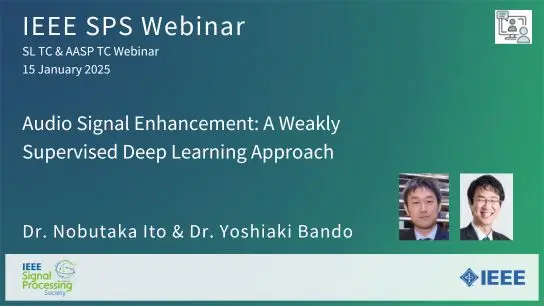Signal-to-interference-plus-noise ratio based optimization for sound zone control
Jesper Brunnström (KU Leuven); Toon van Waterschoot (Department of Electrical Engineering (ESAT-STADIUS/ETC)); Marc Moonen (KU Leuven)
-
Members: FreeSPS
IEEE Members: $11.00
Non-members: $15.00
10 Jun 2023
Sound zone control is posed as an optimization problem where finite impulse response control filters are jointly optimized for low transmit power, while maintaining a sufficiently high signal-to-interference-plus-noise ratio (SINR) in all zones. This problem statement in particular allows the consideration of sound zone control under the additional influence of external noise, which is rarely taken into account and indeed necessitates an alternative problem statement. In addition, the spectral characteristics of the audio signals are taken into account, both for the transmit power minimization and computing the SINR. The optimization problem is shown to be solved optimally by semidefinite relaxation, but the computational cost is high. An alternate method is proposed, inspired by a duality between transmit and receive beamforming commonly exploited in digital communications. A virtual receive optimization problem for sound zone control is derived, and it is shown to have the same optimal solution as the original transmit optimization problem. The receive optimization problem is solved efficiently through a fixed point iteration algorithm. The two proposed methods are compared against acoustic contrast control in a simulated reverberant environment, where it is shown that the proposed methods require less transmit power to produce similar SINRs.



